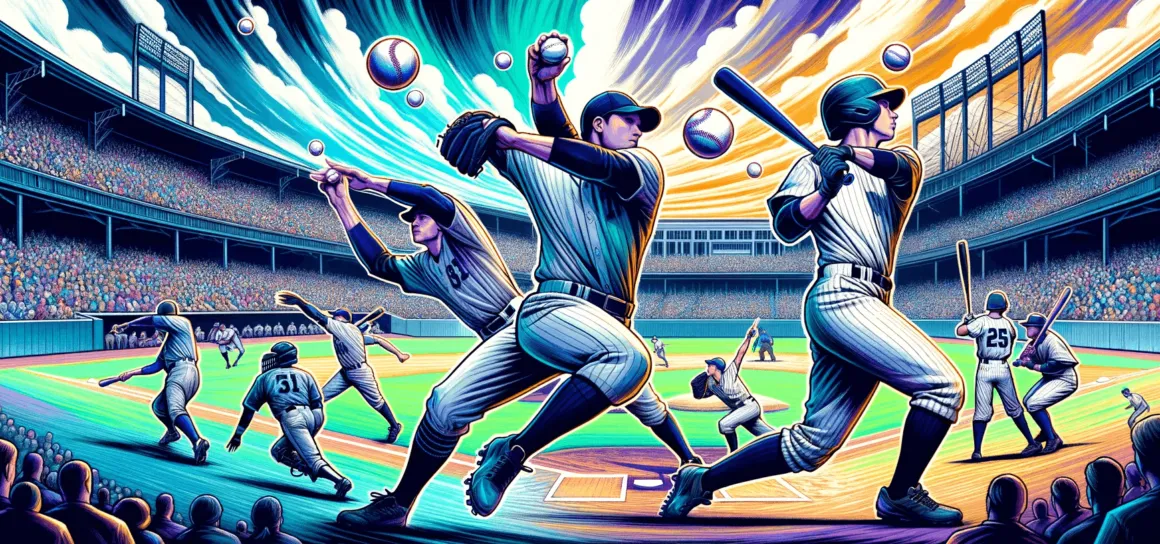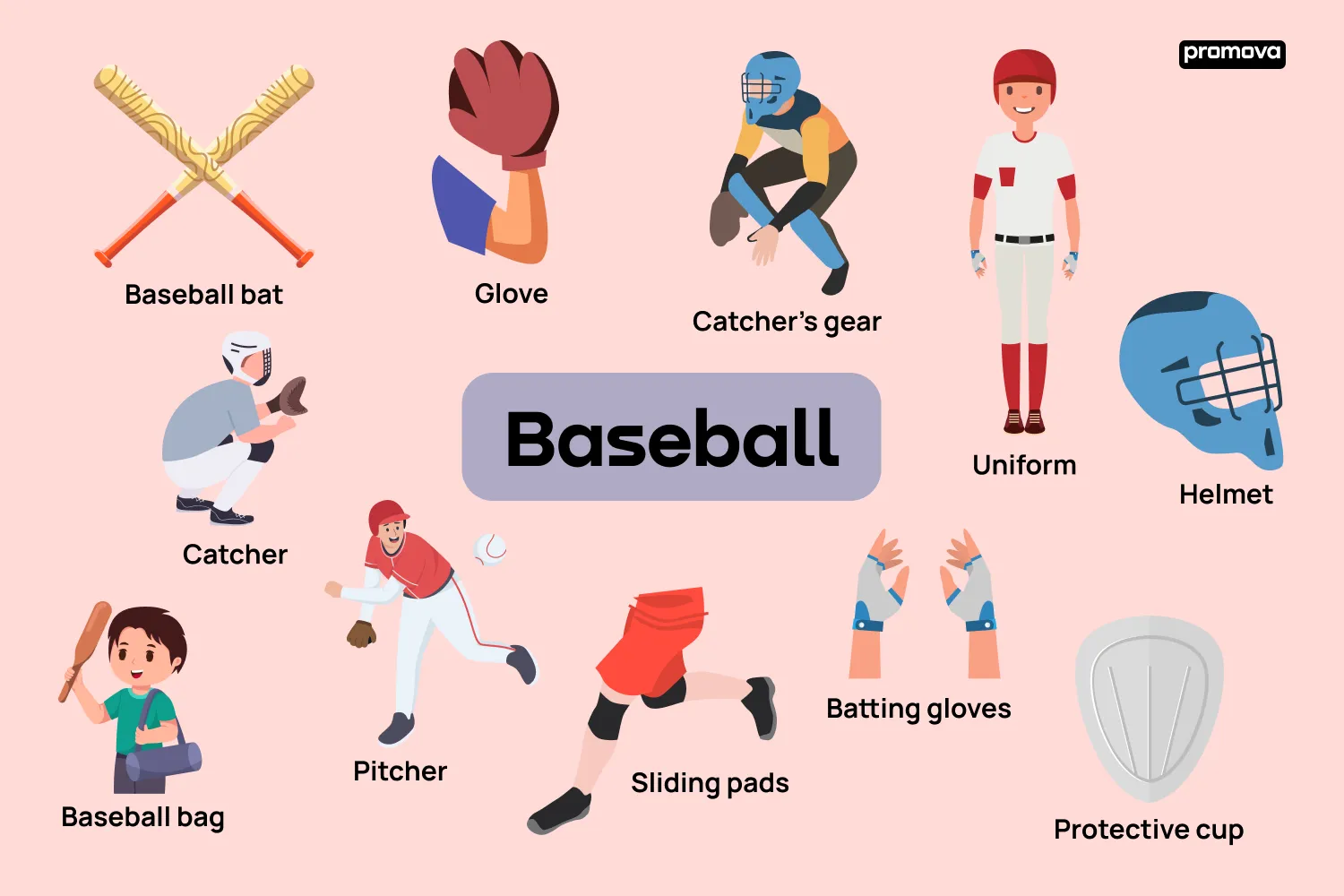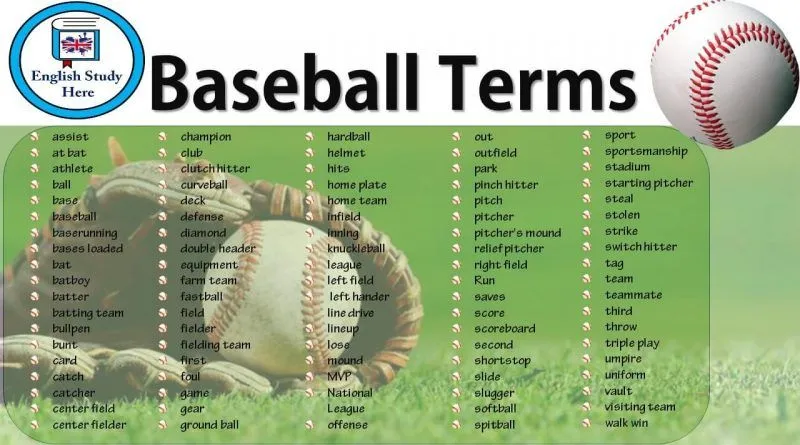
Understanding Baseball Terms
If you are new to the world of baseball, it can be overwhelming to try and understand all the terms that are used. From pitches to positions, there seems to be a whole new language associated with this beloved sport. But fear not, we have compiled the ultimate guide to understanding all the baseball terms you need to know. So grab your glove and bat, and let’s dive into the exciting world of baseball.

History and Origins of Baseball
Before we delve into the different terms used in baseball, it is important to understand the origins and history of this popular sport. Baseball is believed to have originated from a British game called “rounders” in the early 18th century. However, the first recorded game of baseball was played in 1846 in Hoboken, New Jersey by the Knickerbocker Base Ball Club. Over time, the sport gained popularity, and in 1869, the first professional baseball team, the Cincinnati Red Stockings, was formed. Since then, baseball has become a national pastime in the United States and has spread to many other countries, including Japan, Dominican Republic, and Venezuela.
Positions in Baseball
Like any other team sport, baseball has specific positions that players are assigned to on the field. Each position has its unique role and responsibilities, which contribute to the overall success of the team. Here are the main positions in baseball:
Pitcher
The pitcher is arguably the most crucial position in a baseball game. This player stands on a raised mound and throws the ball towards the batter, with the aim of getting them out. Pitchers use a variety of pitches, such as fastballs, curveballs, and sliders, to deceive batters and get them to strike out. They also need to have good control over their pitches and be able to throw accurately to catchers positioned behind home plate. The pitcher’s success is vital to the team’s performance, making it a highly-pressured position.
Catcher
The catcher is the only defensive player who faces the batter directly. This position requires quick reflexes and excellent hand-eye coordination as they have to catch fast pitches from the pitcher. Catchers also need to have a good understanding of the game and be able to read the opposing team’s batting strategies. They are responsible for calling the pitches and guiding the pitcher on which type of pitch to throw next. Additionally, catchers play a crucial role in throwing out base runners trying to steal bases.
Infielders
Infielders consist of three positions: first base, second base, and third base. These players are positioned between home plate and the outfield and are responsible for fielding ground balls hit by the batter. Their main goal is to get the ball to first base before the runner reaches it. First basemen are also responsible for catching throws from other infielders, while second basemen and third basemen have to cover their respective bases and make quick throws to get runners out.
Outfielders
Outfielders are positioned beyond the infield and are responsible for catching fly balls hit by the batter. They also need to have strong throwing arms to prevent base runners from advancing. The outfield consists of three positions: left field, center field, and right field. Center fielders are considered to have the most important role as they have to cover more ground than the other two positions.
Baseball Terms Related to Gameplay

Now that we have covered the main positions in baseball, let’s explore some of the terms related to gameplay that you will hear during a game.
Strike
A strike is a term used when the pitcher throws a pitch that is either swung at and missed by the batter or if the batter does not swing but the ball crosses over the plate within the strike zone. The strike zone is the area between the batter’s armpits and knees when they are in their batting stance. If the pitcher throws three strikes, the batter is called out.
Ball
A ball is a term used when the pitch is thrown outside of the strike zone or if the batter does not swing at a pitch within the strike zone. If the batter gets four balls, they can advance to first base, known as a “walk.”
Foul Ball
A foul ball is a term used when the batter hits the ball outside the field of play or when the ball bounces off the ground before passing over one of the bases. If a batter hits two foul balls with two strikes, they can continue their at-bat until they get a hit or strike out.
Out
An out is recorded when one of the following occurs:
- The batter gets three strikes
- The batter hits the ball and it is caught by a defensive player before it touches the ground.
- A runner is tagged out with the ball before reaching a base.
- A runner is forced out when a defensive player has possession of the ball while standing on the base the runner is trying to reach.
Inning
An inning is a term used to describe one round of play where each team gets a turn to bat. There are nine innings in a regulation baseball game, with each team getting an equal number of turns to bat.
Understanding Different Baseball Pitches
Pitching is a critical component of baseball, and pitchers have a wide range of pitches they can use to deceive batters. Here are some of the most common pitches used in baseball:
Fastball
The fastball is the most basic and straightforward pitch in baseball, and it is also the fastest. Pitchers can throw fastballs at speeds of up to 100 miles per hour, making it challenging for batters to make contact. This pitch is usually the first pitch thrown in an at-bat, and it is used to set up other pitches.
Curveball
A curveball is a pitch that has a downward movement as it approaches the plate. The pitcher grips the ball with their fingertips and uses a snapping motion to create a spin on the ball, causing it to curve downward. This pitch can be challenging for batters to hit, as it often looks like it will cross over the plate but ends up dropping lower.
Slider
The slider is another off-speed pitch that moves horizontally instead of vertically. The pitcher releases the ball slightly off-center, causing it to break away from the batter. It is commonly used to get batters to swing and miss or induce a ground ball.
Changeup
The changeup is a slower pitch that is meant to deceive batters by looking like a fastball but traveling at a much slower speed. Pitchers use this pitch to keep batters off balance and prevent them from timing their swings.
Basic Baseball Rules and Gameplay
Now that we have covered the different positions and terminology used in baseball, let’s take a closer look at some basic rules and gameplay aspects of this sport.
Batting Order
In a baseball game, each team has nine players, and they follow a specific batting order. The batting order is determined by the team’s coach and cannot be changed during the game. The first batter is referred to as the “leadoff” hitter, and they are followed by the second, third, and so on. The ninth batter is known as the “bottom of the lineup” and is followed by the first batter again once the inning ends.
Hits, Runs, and RBIs
There are several ways for a batter to reach base in baseball. If the batter hits the ball and reaches a base safely, it is considered a “hit.” If a runner crosses home plate, it is counted as a “run.” RBIs (Runs Batted In) are attributed to the batter when they hit a ball that leads to a run being scored.
Stealing Bases
Base runners can attempt to steal bases after the pitcher throws the ball. If the runner reaches the next base before the opposing team’s player catches the ball, they have successfully stolen the base. However, if the defensive player catches the ball and tags the runner before they reach the base, the runner is out.
Baseball Lingo and Slang Terms

Apart from the technical terms used in baseball, there are also many unique slang phrases and lingo associated with the sport. Here are some of the most popular ones:
- Grand Slam: When a batter hits a home run with all three bases loaded, resulting in four runs.
- Dinger: A home run.
- Bullpen: The area where relief pitchers warm up before entering the game.
- Cup of coffee: A phrase used to describe a player who has a brief stint on a major league team before getting sent back down to the minors.
- RBI-man: A term used to describe a player who consistently gets RBIs.
- Tape measure shot: When a home run is hit with such power and distance that it could be measured using a tape measure.
Common Baseball Equipment and Gear
To play baseball, you need more than just a ball and a bat. Here are some of the essential equipment and gear used in baseball:
Ball
The official ball used in baseball is made of cork and rubber, wrapped in layers of yarn, and covered in leather. The standard size for a baseball is 9 inches in circumference.
Bat
Bats come in different sizes and weights, and each player chooses one that suits them best. There are also strict regulations on the materials used to make bats to prevent excessive ball speed.
Glove
Fielders wear gloves to catch the ball and prevent injury to their hands. Different positions require different types of gloves, with infielders using smaller gloves for quicker ball transfers.
Protective Gear
Baseball is a high-speed sport, and players can get injured from fast pitches or hard hits. To protect themselves, players wear helmets, chest protectors, shin guards, and other padding as needed.
Uniform
A typical baseball uniform consists of a team jersey, pants, socks, and cleats. Teams often have home and away uniforms, and players are required to wear their team’s colors during games.
Baseball Leagues and Championships
Baseball is played at various levels, from amateur to professional leagues. Here are some of the most well-known baseball leagues and championships:
Major League Baseball (MLB)
The MLB is the highest level of professional baseball in the United States and Canada. It consists of two divisions, the National League and the American League, each with three divisions. The top teams from each division compete in the World Series to determine the MLB champion.
Minor League Baseball (MiLB)
The MiLB serves as a developmental league for players who are not yet ready to play in the MLB. It is organized into six different levels, with players starting in Rookie Ball and working their way up to Triple-A, which is one level below the MLB.
College Baseball
College baseball is played by student-athletes at colleges and universities across the country. The top college teams compete in the College World Series to determine the national champions.
Little League Baseball
Little League Baseball is an organization that allows children aged 4 to 12 to play baseball on local teams. They also hold the Little League World Series, where qualifying teams from around the world compete for the championship.
Conclusion
Baseball is more than just a game; it is a part of American culture and a beloved pastime for many people around the world. Understanding the terminology, positions, and rules of baseball can help you appreciate this sport even more. We hope that this ultimate guide to baseball terms has given you a better understanding of the game and will make watching or playing it even more enjoyable. Remember, practice makes perfect, so go out and play ball!

